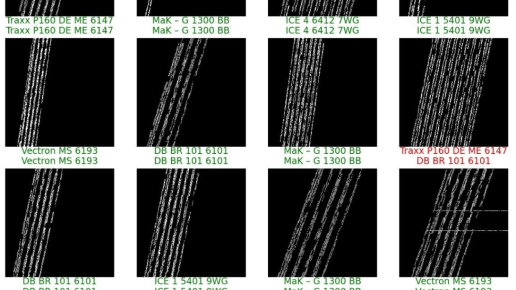Project description
The aim of RailDefControl is a robust measuring and monitoring system that monitors track sections in regular operation and detects rail irregularities almost in real time. For this purpose, accelerations of the rail movement during train crossings are measured, filtered close to the sensor and integrated in order to determine and automatically evaluate deformation paths (incl. traffic light system and alarming). In addition, numerical models are being developed to map environmental and subsurface influences (solid track / ballast, temperature, etc.) and to increase the reliability of detection.
Focus of the project
-
Development of a weather-resistant acceleration measurement system for permanent track use.
-
In-situ data processing: filtering, detrending and double numerical integration; data reduction 90% before upload.
-
Train classification (speed, axle spacing, axle loads) for train class-specific evaluation.
-
Alerting & forecasting: limit value check, trend analysis and predictive warning.
-
Numerical simulations (including FE models) for investigating influencing factors and calibration.
Everything at a glance
Forschungsmethoden & Vorgehen
Messsystem & Feldaufbau:
Konzeption, Sensor-Screening, Installation an DB-Teststrecke mit fester Fahrbahnplatte; Erfassung von Test- und Referenzdaten.
Signalverarbeitung
Filterdesign (Hoch/Tief/Band/Kerb), Detrending, numerische Integration der Beschleunigungen zu Verformungswegen; Triggerung der Verarbeitung bei Ereignissen.
Plausibilitätsprüfung
Frequenzanalyse (FFT/Eigenfrequenzen, Amplitudenverhältnisse) zur Qualitätssicherung.
Zugklassifikation
Bestimmung von Geschwindigkeit, Achsabständen und-lasten aus den Messdaten; Abgleich mit Zugklassen.
Alarmierung & Prognose
Grenzwertprüfung (DB-Richtlinien), Trend-/Zeitreihenanalyse und Benachrichtigung (E-Mail/SMS).
Numerische Modelle
FE-Modelle für Stützpunkt (nichtlineare Feder-/Dämpferkennlinien) und Schiene; Simulation von Untergrund/Temperatur/Rate; Kalibrierung an Messdaten.
Validierung & Optimierung
Funktionstests, Parameterstudien (Samplingrate/Filter), Feintuning der Algorithmen.
Fördermittelgeber und Kooperationspartner
Förderung: Bundesministerium für Wirtschaft und Klimaschutz (BMWK), Programm ZIM – FuE-Kooperationsprojekt
Industriepartner: Gantner Instruments Test & Measurement GmbH


